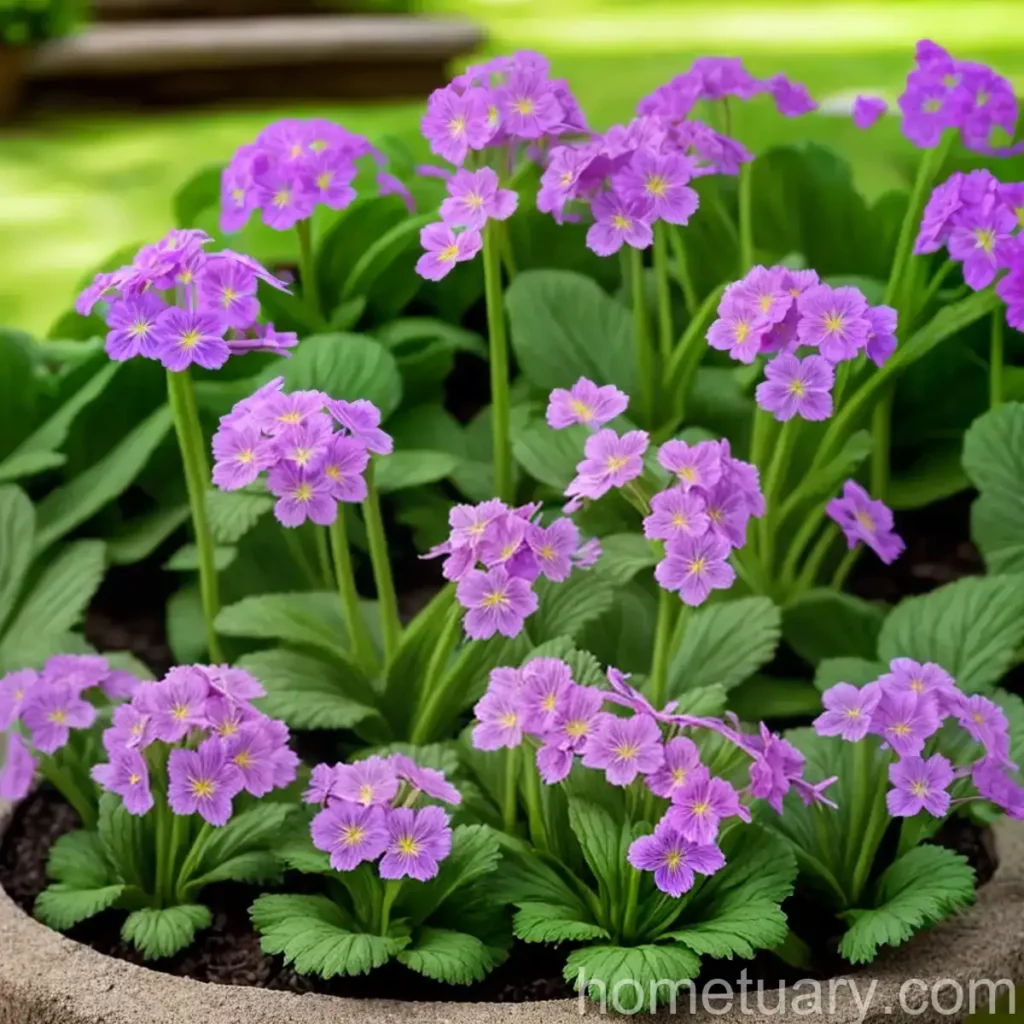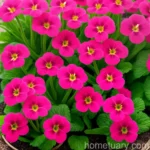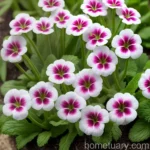All You Need to Know About Primula (Primula vialii) Care
The Primula vialii, commonly known as candelabra primrose, is a delightful perennial that adds a burst of color to any garden. This enchanting plant is native to the moist meadows and riverbanks of Tibet and Western China. Its unique appearance and vibrant colors make it a popular choice for gardeners looking to add a touch of elegance to their outdoor spaces.
In this comprehensive guide, we will delve into the various aspects of caring for primula (Primula vialii). From planting and maintenance to propagation and disease management, we will explore all the essential elements that contribute to the successful cultivation of this beautiful plant.
So, whether you’re a seasoned gardener or a novice enthusiast, join us as we unlock the secrets to nurturing and enjoying the splendor of Primula vialii in your own garden. Let’s begin by understanding the fundamental characteristics of this captivating plant.
What is Primula (Primula vialii)?
The Primula vialii, a member of the Primulaceae family, is a herbaceous perennial that showcases stunning flower spikes adorned with vibrant blooms. This eye-catching plant features basal rosettes of elongated, lance-shaped leaves that provide an attractive backdrop to its showy floral display.
The candelabra primrose derives its common name from the distinctive arrangement of its flowers, which form a tiered, candle-like structure atop sturdy stems. The individual flowers boast a captivating color combination, with pink to red buds opening to reveal lilac to purple petals, creating a striking visual impact.
Key Takeaways – Primula (Primula vialii)
Before we delve into the specifics of caring for primula (Primula vialii), let’s summarize the crucial points that we will be exploring throughout this guide:
- Plant Name: Primula (Primula vialii)
- Botanical Name: Primula vialii
- Common Names: Candelabra primrose
- Native Habitat: Moist meadows and riverbanks of Tibet and Western China
Now that we have an overview of what distinguishes Primula vialii, let’s proceed to understand the cultural requirements and utilization of this captivating plant.
Culture
Cultivating Primula vialii is a rewarding endeavor, and understanding its cultural needs is paramount to ensuring its health and vitality. Let’s explore the essential cultural considerations for nurturing this stunning perennial.
Uses
Primula vialii holds immense ornamental value and is widely utilized to enhance the visual appeal of gardens, landscapes, and various outdoor settings. Its vibrant flowers and lush foliage make it a popular choice for:
- Flower beds and borders
- Woodland gardens
- Bog or water gardens
- Containers and planters
The enchanting appearance of the candelabra primrose makes it a versatile plant that can be incorporated into a myriad of garden designs and arrangements.
Water
Primula vialii thrives in consistently moist soil and has a preference for slightly acidic to neutral pH levels. To maintain adequate moisture levels, it is essential to provide regular watering, especially during periods of dry weather. However, it’s crucial to avoid waterlogging, as excessively wet conditions can lead to root rot and other complications.
Sunlight
When it comes to sunlight preferences, Primula vialii exhibits a penchant for partial shade to filtered sunlight. While it can tolerate dappled shade, it flourishes best in locations that offer moderate light levels and protection from the intense midday sun.
Fertilizer
To support healthy growth and abundant flowering, Primula vialii benefits from regular fertilization during the growing season. A balanced, water-soluble fertilizer formulated for flowering plants can be applied every 4 to 6 weeks, following the manufacturer’s recommendations for dilution and application rates.
Soil
The ideal growing medium for Primula vialii is rich, well-draining soil that retains moisture without becoming waterlogged. A combination of organic matter, such as compost or well-rotted manure, blended with a loamy or sandy soil, provides an excellent foundation for the candelabra primrose to thrive.
Pruning
Pruning Primula vialii serves to maintain its overall vigor and appearance, as well as to remove spent flower stems and prevent the onset of disease. Here are some essential pruning techniques to follow for the optimal care of this captivating perennial:
- Deadheading: After the initial flowering period, promptly remove faded or spent flower spikes to encourage continuous blooming and prevent the plant from expending energy on seed production.
- Leaf Removal: Trim any damaged, yellowing, or diseased leaves as needed, ensuring that the foliage remains healthy and free from any potential issues.
Propagation
The propagation of Primula vialii provides an excellent opportunity to expand your plant collection or share the beauty of this species with fellow gardening enthusiasts. There are several reliable methods for propagating the candelabra primrose, including:
- Division: Divide mature plants in early spring or immediately after flowering, ensuring that each division possesses healthy roots and foliage.
- Seeds: Collect seeds from mature plants and sow them in a well-prepared seedbed or individual containers, maintaining a consistently moist environment until the seedlings establish themselves.
Container Popularity
The captivating appearance and moderate size of Primula vialii make it a sought-after choice for container gardening enthusiasts. Its stunning floral display and lush foliage lend themselves well to various container arrangements, providing a burst of color and elegance to patios, balconies, and other outdoor living spaces.
Container Care
When growing Primula vialii in containers, it’s essential to pay close attention to its care requirements to ensure optimal health and longevity. Some key considerations for container cultivation include:
- Well-Draining Soil: Utilize a high-quality potting mix that offers excellent drainage while retaining sufficient moisture for the plant’s needs.
- Adequate Watering: As containers can dry out more quickly than garden beds, monitor the moisture levels closely and provide regular watering to keep the soil consistently moist, but not waterlogged.
- Light Conditions: Position the containers in areas that receive partial shade to filtered sunlight, protecting the plants from the harsh afternoon sun to prevent heat stress.
- Fertilization: Apply a balanced, water-soluble fertilizer at regular intervals during the growing season to support healthy growth and abundant flowering.
Common Diseases and Pests
While Primula vialii is relatively resilient, it can be susceptible to certain diseases and pests that may impact its vitality and appearance. Understanding these potential challenges and implementing proactive measures is essential for maintaining the plant’s health. Let’s explore some common issues and their management strategies:
Disease Diagnosis
- Powdery Mildew: This fungal disease manifests as a powdery, white coating on the leaves, typically in humid conditions. To address powdery mildew, improve air circulation around the plants, avoid overhead watering, and consider applying a suitable fungicidal treatment if the infestation persists.
- Crown Rot: Excessively wet conditions can lead to crown rot, which may cause the plant to wilt and display signs of decay. Ensure proper drainage and avoid waterlogging to prevent this issue, and consider removing affected plants to prevent the spread of the disease.
Common Pests
- Aphids: These small, sap-sucking insects can cluster on the tender growth of Primula vialii, causing distortion and discoloration of the leaves and stems. Insecticidal soap or horticultural oil applications can effectively manage aphid infestations, minimizing the impact on the plant’s health.
- Slugs and Snails: These voracious feeders can leave behind unsightly holes and damage on the foliage of Primula vialii. Implement physical barriers, such as copper tape or diatomaceous earth, to deter these pests, and consider baits or traps as additional control measures.
Botanist’s Tips
Now that we’ve covered the essential aspects of caring for Primula vialii, let’s explore some valuable tips from botanical experts to enhance the success and enjoyment of cultivating this enchanting perennial:
- Ample Moisture: Pay close attention to the moisture requirements of Primula vialii, especially during periods of dry weather, to ensure that the plant remains healthy and vibrant.
- Protection from Midday Sun: Position the plant in locations that offer partial shade and protection from the intense midday sun, as prolonged exposure to harsh sunlight can result in heat stress and leaf scorch.
- Regular Deadheading: Promptly remove spent flower spikes to encourage continuous blooming and maintain the plant’s attractive appearance throughout the growing season.
Fun Facts
Before we conclude our comprehensive guide to Primula vialii care, let’s explore some intriguing and delightful facts about this captivating plant:
- The candelabra primrose’s botanical name, Primula vialii, pays tribute to the renowned Scottish botanist George Forrest.
- In its native habitat, Primula vialii thrives in the understory of forests and along the banks of streams and rivers, where it enjoys the cool, moist conditions provided by these environments.
- The striking color combination of the flowers serves as a visual attractant for pollinators, including bees and butterflies, enhancing the ecological value of the plant in garden settings.
Links to External Resources
For additional information and resources on Primula vialii care, propagation, and utilization, consider exploring the following reputable sources:
- The Royal Horticultural Society (RHS) – The RHS website offers valuable insights into the cultivation and maintenance of Primula vialii, along with expert advice on gardening practices.
- Missouri Botanical Garden – A trusted resource for botanical information, the Missouri Botanical Garden provides comprehensive details on Primula vialii and its cultural requirements.
In conclusion, the Primula vialii, with its enchanting floral display and graceful appearance, holds a special place in gardens, landscapes, and outdoor spaces. By understanding and implementing the principles of proper care, gardeners can appreciate the beauty and elegance of this captivating perennial, creating a haven of color and charm within their personal botanical sanctuaries.
Whether tended in traditional garden beds or showcased in decorative containers, Primula vialii stands as a testament to the enduring allure of nature’s splendor, captivating hearts and minds with its enchanting floral symphony. Embrace the joy of nurturing and savoring the time-honored beauty of the candelabra primrose in your own garden oasis, and delight in the countless moments of wonder and inspiration it bestows upon all who encounter its exquisite blooms.















